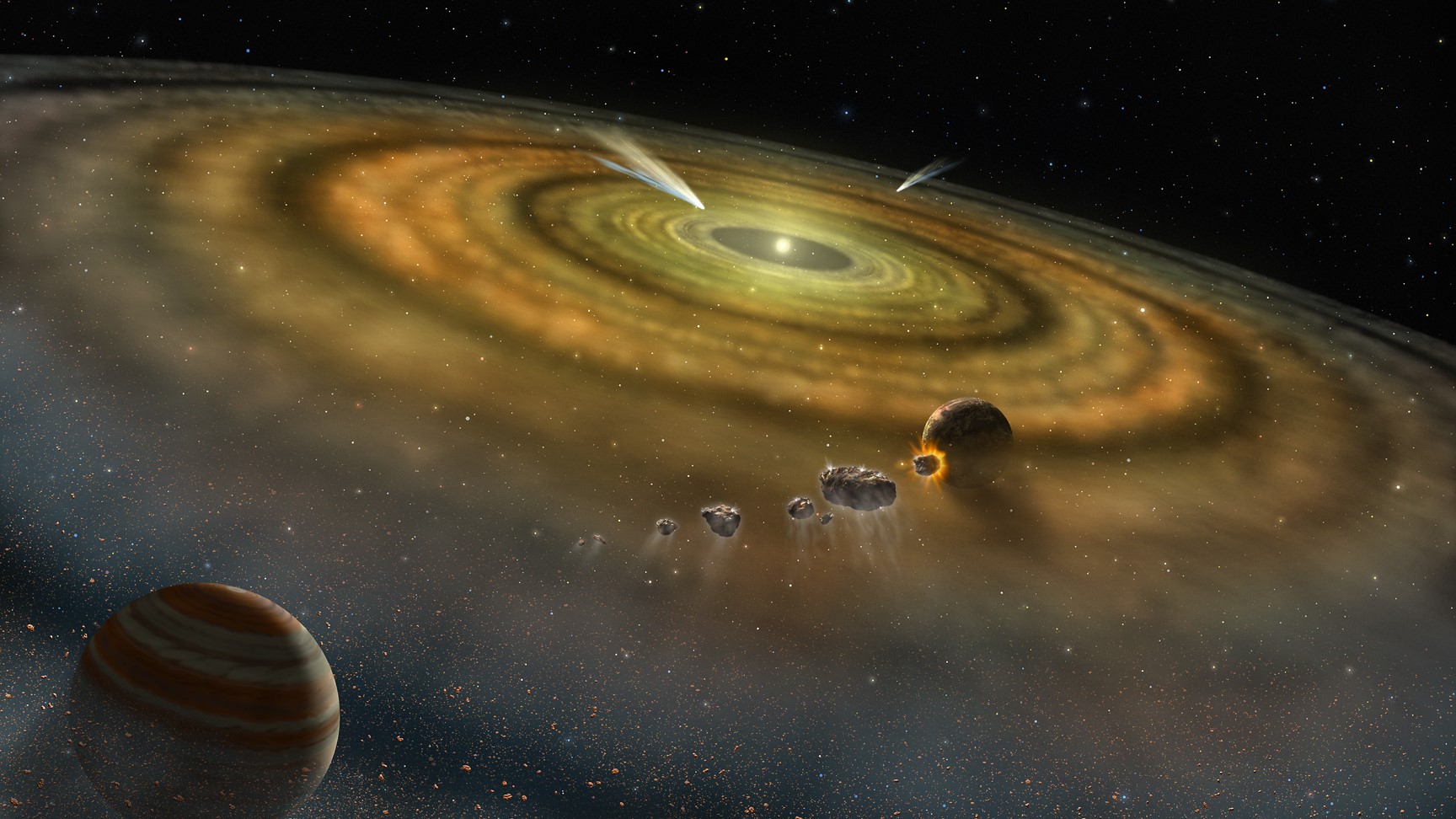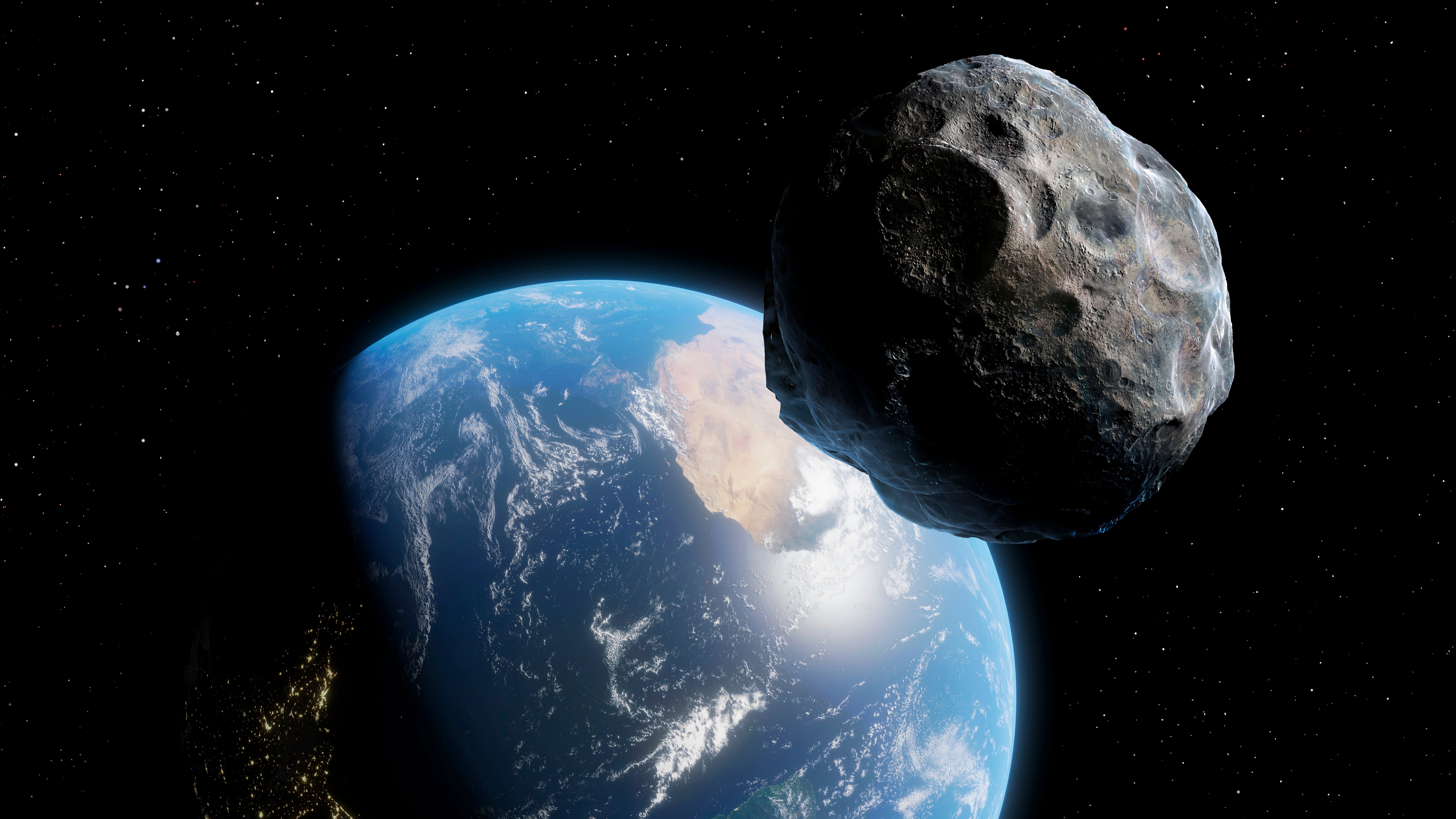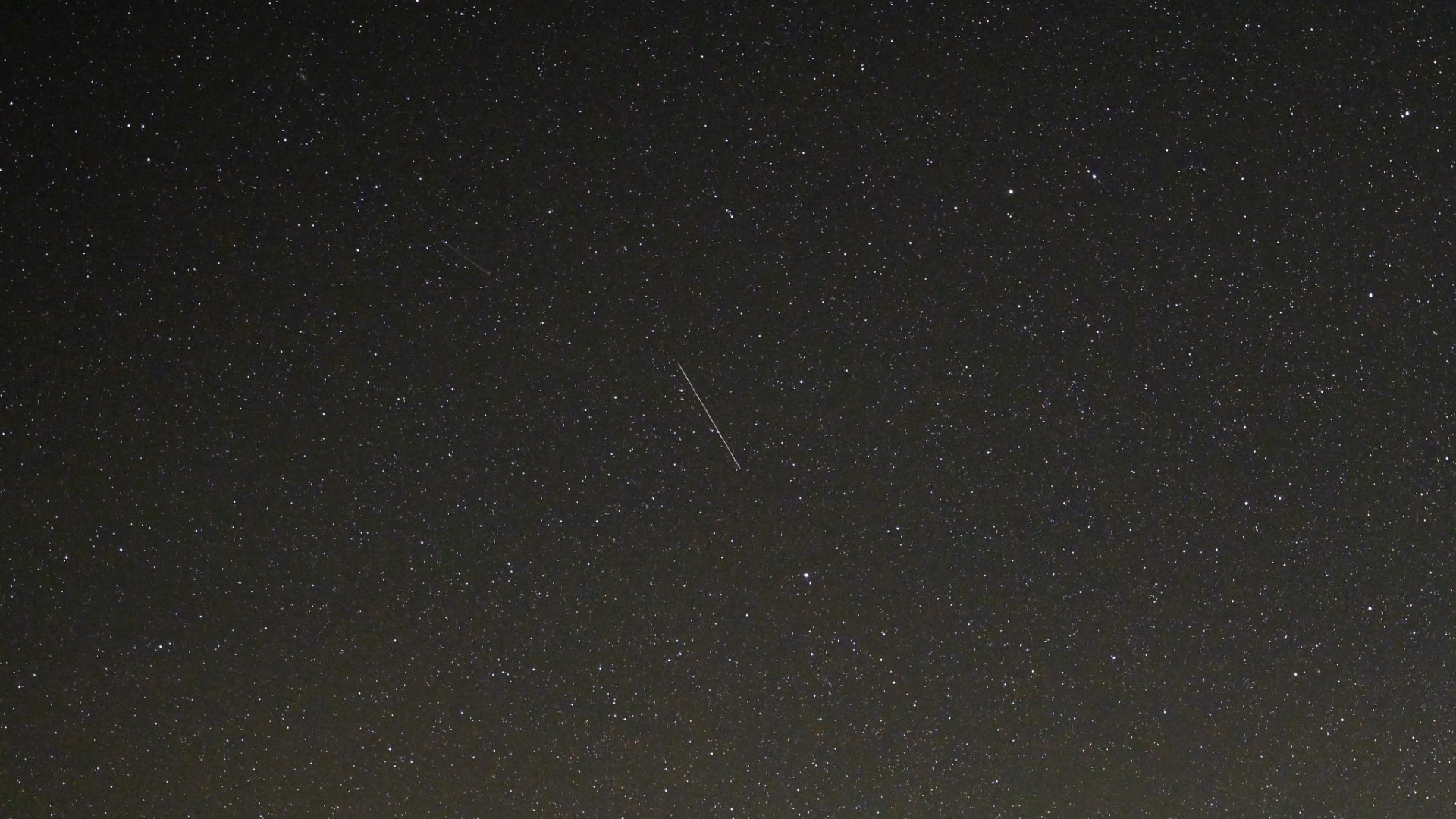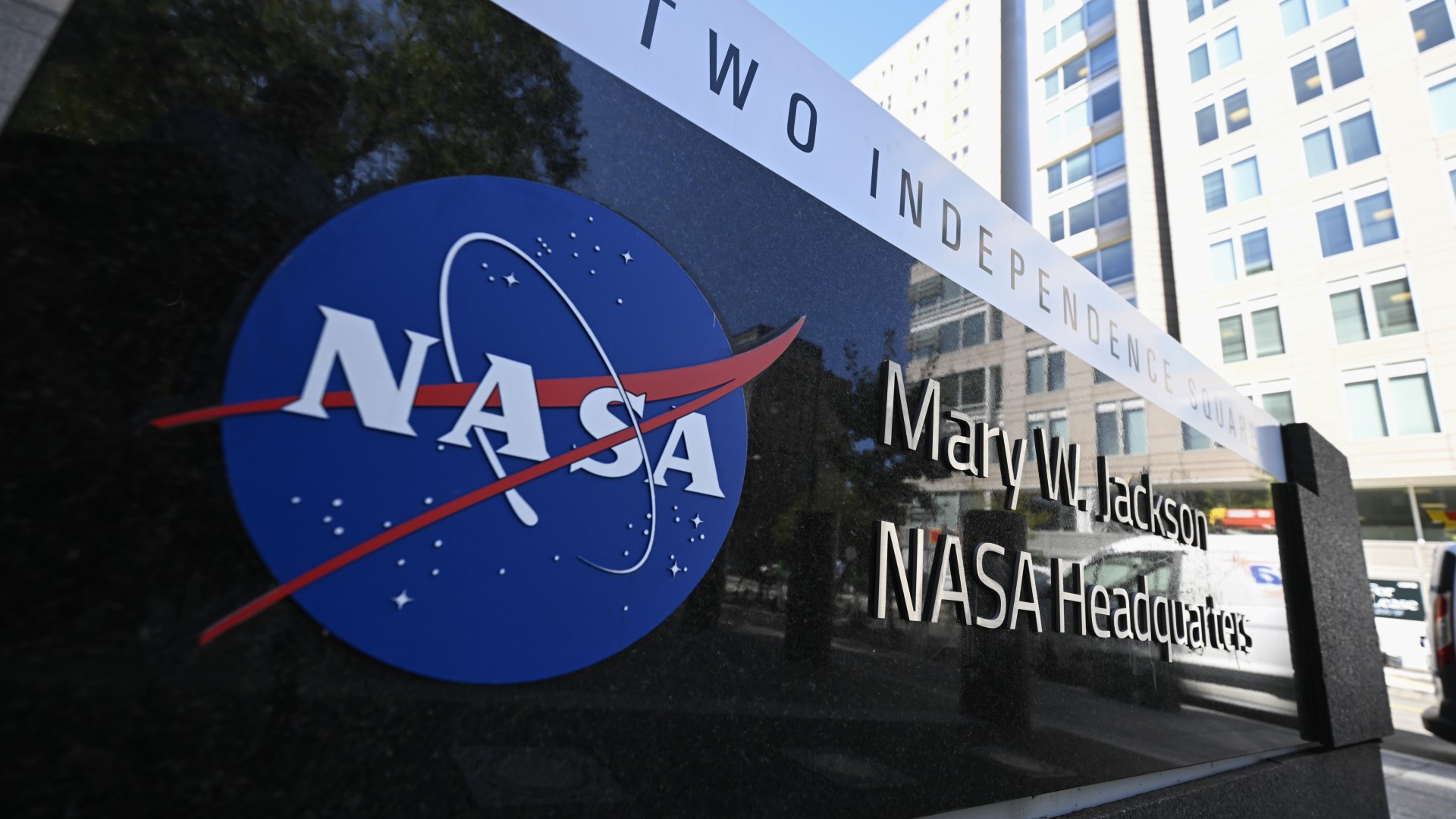
Earth and the rest of our solar system's inner, rocky planets are the products of a myriad of tiny planetesimals — glorified pebbles of primordial cosmic dust — assembling themselves together more than 4 billion years ago. Now, a new analysis suggests that those planetesimals already contained water.
Researchers tested samples from meteorites that they say are just as ancient as those planetesimals. In doing so, they found the fingerprints of chemical reactions known to occur in the presence of water.
There is no water to be found in these samples today, but scientists can still trace water that they once held. Over time, if water is in the presence of other elements, the water molecules' oxygen atoms will separate and join up with those very elements. Water and iron, for instance, will beget iron oxide. That's the substance that colors Mars’ surface rust-red.
However, even that iron oxide is now long gone in the meteorites — but when it faded, it would have taken a little bit of the meteorites' iron content away with it. So, scientists can test for ancient water by measuring a meteorite's iron level in comparison to the space rock's other elements.
Related: How giant impacts shaped the formation of the solar system's planets
Researchers expected to find about as much iron as nickel and cobalt. But instead, they found quite a lot of missing iron in comparison — implying the presence of oxygen and, by extension, water. In short, they concluded that the primordial material that formed the inner solar system likely included water.
"The difference between what we measured in the inner solar system meteorites and what we expected implies an oxygen activity about 10,000 times higher," said Paul Asimow, a geologist and geochemist at the California Institute of Technology, in a statement.
Get the Space.com Newsletter
Breaking space news, the latest updates on rocket launches, skywatching events and more!
If water's hydrogen and oxygen were present in these primordial planetary building blocks, then it is a good sign that other elements — carbon and nitrogen, critical to creating life — may have been there at the start, too.
The researchers' work is outlined in a paper published in the journal Nature Astronomy on Jan. 9.
Join our Space Forums to keep talking space on the latest missions, night sky and more! And if you have a news tip, correction or comment, let us know at: community@space.com.

Rahul Rao is a graduate of New York University's SHERP and a freelance science writer, regularly covering physics, space, and infrastructure. His work has appeared in Gizmodo, Popular Science, Inverse, IEEE Spectrum, and Continuum. He enjoys riding trains for fun, and he has seen every surviving episode of Doctor Who. He holds a masters degree in science writing from New York University's Science, Health and Environmental Reporting Program (SHERP) and earned a bachelors degree from Vanderbilt University, where he studied English and physics.
-
Osbert Reply
This is NOT news or new.Admin said:Scientists have found fingerprints of water in ancient meteorites reminiscent of the planetesimals that formed Earth.
Earth's water might have come from ancient space rocks, meteorite discovery suggests : Read more
I've know about this for 30 years, at least.
Google it
Youtube it
Meteorites - are space rocks that have survived their passage through the atmosphere and landed on the surface of a planet or moon.Asteroids - are rocky, metallic, or icy bodies that orbit the sun within the inner solar system.
THEY HAVE WATER !!!! but not enough to fill the oceans completely. Comets played a BIG part also.
...kill'n me.... -
Classical Motion I think that the earth is saturated with super heated water. Adding greatly to earth's water inventory. A true water planet. The dissolved ions in it probably gives us our M field. Rotating interior charge fields. Current. A change in ion polarity population could flip that field. Without changing earth's rotation.Reply









